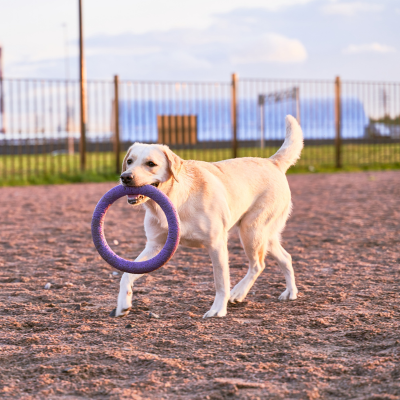Base Narrow Canines Malocclusion in Dogs
Base narrow canine malocclusion is also known as linguoverted canine. It occurs when the lower canines are hitting the roof of the mouth or the gums of the upper jaw, resulting in pain and discomfort.
- The first cause is when the jaw is normal but the canines erupt too vertically rather than slightly outwards so that they sit comfortably outside of the gums.
- The second cause is when the lower jaw length is too short (an overbite), trapping the lower canines in between the upper canines as they erupt.
Dogs with base narrow canines will have the canines penetrating into the gums or hard palate every time they chew! This condition is extremely painful and should be addressed even though they have not shown any overt signs of pain. A lot of puppies or dogs with a base narrow canine will tend to chew a lot! This may contradict the idea that the puppy/ dog with a narrow base canine is in pain. However, this is not true. Most puppies and dogs that have this condition tend to hold something in their mouth (a toy, a fabric, a stick and even your hand!) as this prevents them from completely closing their mouths so that they are not constantly biting and hurting themselves.

- Poodle or poodle crosses
- Staffordshire bull terrier
- English bull terrier
- Dachshunds
- Weimaraners
- Rottweiler
- Greyhounds
- Collies
- German Shepherds
What are the treatment options?
Puppies under 6 months
- Extraction
- This procedure can be done as soon as a puppy is 8 weeks old. This is often a palliative treatment. The adult tooth is very likely to still erupt in a similar position to the deciduous canines so further intervention is likely still required. In juvenile patients with a mild overbite, removing the base narrow deciduous canines may allow for maximal growth of the lower jaw, hence, fixing the problem. Extraction should be carefully removed to avoid damaging the unerupted adult teeth.
- Orthodontic correction
- This is a specialist procedure where the bite has to first be assessed. Orthodontic treatment can bring more harm than good if not performed appropriately. This may involve using doggy braces or using plates to achieve the desired teeth alignment.
Puppies above 6 months and adults
- Orthodontic repositioning
- This involves braces, plates or ball therapy to correct the bite. Ball therapy is a very cheap and easy treatment as it involves encouraging your furbaby to chew on a ball. Ball therapy, however, is not for every dog. It is only effective for very specific cases depending on the bite of the dog and the age. Orthodontic repositioning takes time to achieve the desired results but it is the least invasive procedure. The dog’s bite has to be assessed first to determine if orthodontic procedure is suitable.
- Canine teeth height reduction
- This involves shortening of the tips of the linguoverted canines to stop it from hitting the gums or hard palate, hence resolving the pain. Cutting the tooth exposes the pulp cavity so it has to be covered with fillings to protect it from pain, tooth root infection and tooth death. This procedure requires 6 to 12 monthly dental radiograph follow-up throughout the animal’s lifetime.
- Extraction of the lower canines
- This is the most simple and effective method to resolve the pain from base narrow malocclusion. However, this may result in some changes to your furbaby. This includes tongue protrusion from the mouth due to not having the lower canines to hold the tongue in place. It may also slightly weaken the jaw which may increase risk of jaw fracture.
The bottomline is that there is a solution for every base narrow canine case. This condition can result in life-long pain and damage if left treated. The earlier it is diagnosed, the earlier we can intervene to make sure your furbaby has a pain-free, comfortable mouth. If you suspect that your furbaby has a base narrow canine, please consult with your veterinarian to formulate the best plan going forward.
Keep Smiling,
My Vet Animal Hospital.


